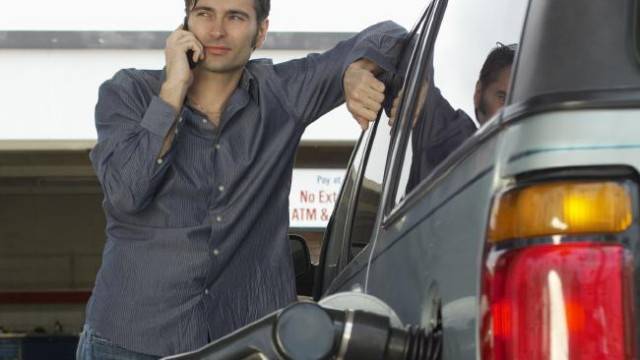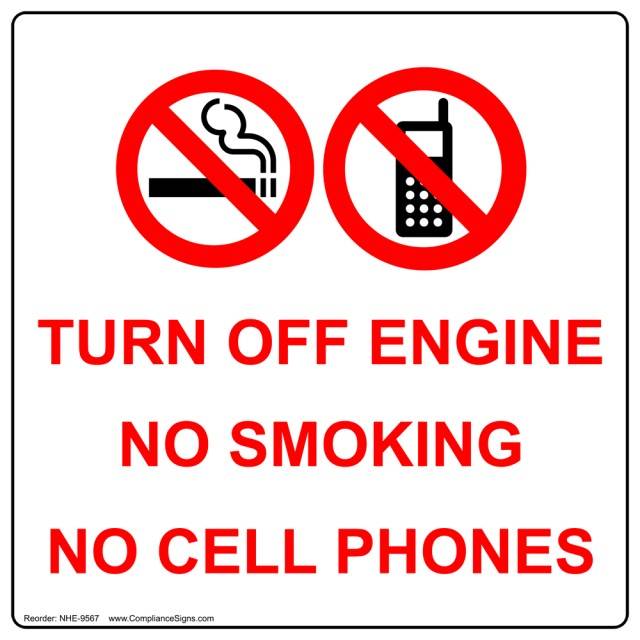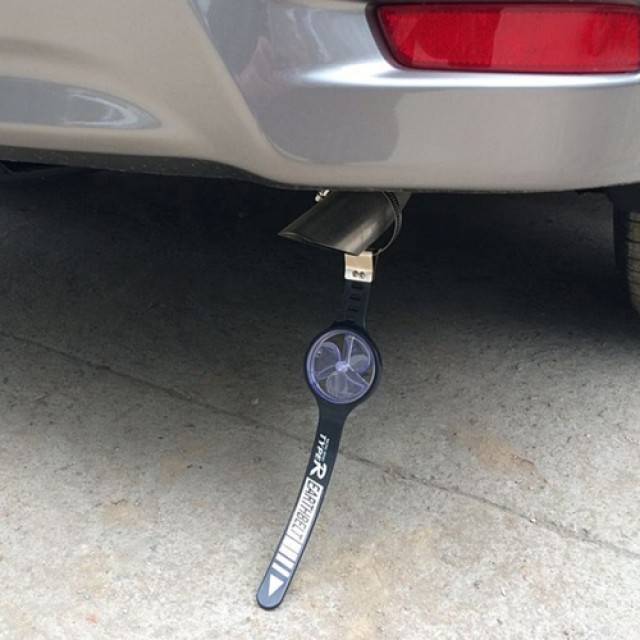Can Using Your Cellphone Cause Fires and Explosions at Gas Stations?

- The Real Culprits: Static Electricity and Fuel Vapors
- Can cellphones ever cause fire?
- So what's the deal with that "SIGN" in gas stations?
- How to prevent "static electricity" fires from happening
- How to prevent static from happening in the first place
- Change your shoes
- Use fabric softener
- Check your clothes’ materials
- Use a grounding strap for non-conductive tires
- Make use of static shock eliminators
No, it doesn't. Yes, explosions and fire sometimes occur, and there may even be a cellphone nearby when they happen. But the reason isn't exactly what you might think. Actually, it's far from it.
Many people assume that the reason why cellphones explode is due to radio signals emitted by their mobile phones. So that simple ring is enough to keep everyone at the edge of their (car) seats when they're in gas stations. And while it's not a bad assumption, the real reason why these accidents occur is really because of three elements: electricity, gas (and air).
The Real Culprits: Static Electricity and Fuel Vapors
Let's add some physics here for fun (if you're already bored, just scroll down). @https://cdn-images-1.medium.com
@https://cdn-images-1.medium.comRemember in high school when your Physics teacher introduced atoms? That's where we'll start as well.
All things have atoms surrounded by electrons. However, there are some materials that have more powerful atoms that attract electrons in the process.
When two materials come in contact together, the one with the more powerful atom will attract the electrons from the other material, causing the electrons from the weaker atom to transfer to the material with the more powerful atom.
The reason why rubbing creates static electricity is not really so much because of friction, but because of the constant, repetitive contact that takes place between the two objects. This allows more electrons to transfer to the material with the more powerful atom. Electrons build up over time, causing the material to be "electrically charged".
Similarly, you can get "electrically charged" when your shoes keep rubbing your car's carpet or plastic flooring. The electrons from the carpet or plastic transfer to your soles. The electrons inside you build up, causing static electricity to grow as well. When this happens, your entire body starts to create an electric charge ("body voltage").
How "charged" you are depends on how many electrons you've built up inside, but studies show that people can build up a charge of up to 60,000 volts just by getting in and out of the car. Now, when you touch a material that has fewer electrons than you (like a metal pump), the electrons get "excited" and flow from you towards the metal pump. This process creates a "spark".
That "spark" is the reason why pump fires occur. It creates heat, and when they mix with the air around you (oxygen) plus the fuel vapors that linger around your car, then they ignite and cause a fire or an explosion.
Can cellphones ever cause fire?
 @http://cdn.newsapi.com.au
@http://cdn.newsapi.com.auNo, they won't, but there is an extremely slim chance that it can also cause fires if you have a defective battery that can cause a spark. However, it would take a large spark to set off a fire -- which we doubt a defective battery can produce.
If you're still not convinced, we recommend you watch this informative and entertaining video by Mythbusters. It's "science in action" at its finest.
So what's the deal with that "SIGN" in gas stations?
 @https://www.compliancesigns.com
@https://www.compliancesigns.comActually, the primary reason why there are signs asking everyone to turn off their phones is to prevent drivers from getting distracted while filling up their cars. Sometimes, using cellphones makes people neglect what's going on around them, like forgetting about the pump inside their tank, giving the wrong directions to the gas attendant, or even crashing the car in front of them.
So if it's that's the case, does this mean that you don't need to turn off or use your cellphone in the first place? Truth is, you really don't have to, but in this case, it's still better to err on the side of safety by turning it off and not using it -- just in case. In the end, it's always better to be safe than sorry.
How to prevent "static electricity" fires from happening
It's really all about preventing that "spark" from taking place. You can do this by lessening the static electricity in your body -- or "discharging".
There are four ways to do this:
- Before you touch anything, grip you keys firmly to prevent air from coming in between your skin and the metal key (this will prevent sparks from happening between them), and use it to touch your car door or fuel cover first. What happens here is the key (a good conductor) will drain off the excess charge inside you, so you lessen your body's static electricity load. This will lessen sparks from occurring, and if it does, their effects are very minimal.
- You can also touch your car's metal frame as you get out of the car. Better yet, use bare metal that has no paint.
- Touch the car with a coin. You might see a very small spark between the car and the coin (same with the key), but this will not hurt your finger in the process.
- If you don't have any metal with you, touch the window for a few seconds. Glass is not a fast conductor, so you may need to touch it for a longer period of time compared to metal. Once you do this, then your "electric charge" will slowly transfer to the glass without creating a spark.
How to prevent static from happening in the first place
Change your shoes
Rubber or Plastic soles can build up charge quickly, especially when rubbed together. Change your shoe soles to leather or Electrical Static Discharge (ESD) shoes. These shoes not only make charging difficult, but they easily let any "charge" you pick up flow out towards the ground.
Use fabric softener
Add some fabric softener to your car seats by mixing a teaspoon of liquid fabric softener in a liter of water. Spray them on your seats and it will eliminate static cling for only a few days.
Check your clothes’ materials
Modern fleece and polyester materials are highly conducive to static electricity. Even wool or cotton can build up charge as well. And while you don't need to drive naked, just be aware you're wearing them and don't forget to "discharge" before you get out of the car.
Use a grounding strap for non-conductive tires
 @http://www.smpnih.com
@http://www.smpnih.comDo you own old classic cars with white rubber tires? How about cars that have tires treated with carbon black? These are "low rolling resistance" tires mostly made from silica. And they don't discharge to the ground. You can fix this problem by attaching a grounding strap that connects your car to the ground (or road) .
Make use of static shock eliminators
You can actually buy a static shock eliminator. It will drain off static electric charges by slowing down the discharge of electrons from your body. These gadgets can be fitted on key chains for easy access, anytime.Featured Articles
- Latest
- Popular
Recommended Articles For You
Featured Cars
- Latest
- Upcoming
- Popular
Car Articles From Zigwheels
- News
- Article Feature
- Advisory Stories
- Road Test
